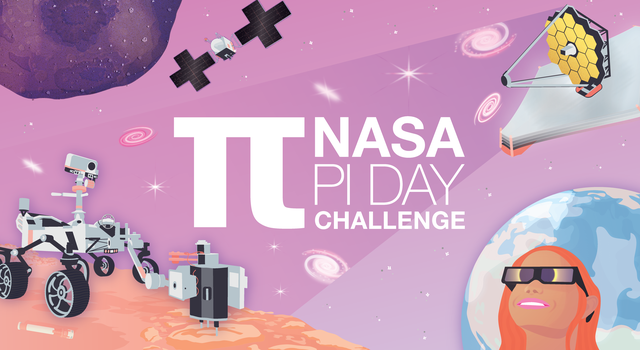Pi Day Notice and Wonder / Eclipsing Enigma
Eclipsing Enigma

A solar eclipse happens every so often when the Moon passes between the Sun and the Earth, blocking the Earth's view of the Sun. For just a few moments, the Sun's light is covered by the Moon and the Sun appears dark to people on the Earth. Have you ever wondered when the next partial or total eclipse will occur, or what portion of the Sun is blocked by the Moon when they align?
I notice —
- the Sun, the Moon, and planet Earth;
- the Sun is very large, and the Moon is very small compared to the size of the Earth;
- a person is looking up towards the sky;
- the person is wearing glasses;
- the Sun, the Moon, and Earth are aligned; and
- where someone is on Earth affects what and how they are seeing.
What else do you notice? Share your thoughts on social media using the hashtag #PiDayNASAxNCTM and join the conversation!
I wonder —
- about the ratio of the sizes between the Sun, the Moon, and the Earth;
- what the radius, diameter, and circumference are of the Sun, the Moon, and the Earth;
- what the surface area is of the Sun, the Moon, and the Earth;
- whether we can find the distance from the Sun to the Moon, the Moon to the Earth, and the Earth to the Sun;
- why the person is wearing glasses;
- why you should not look directly at the Sun without glasses;
- how often do the Sun, the Moon, and the Earth align;
- what proportion of the Sun is blocked by the Moon during a partial eclipse;
- how big the angle of darkness is (i.e., the angle from the Sun’s edges to the edge of the Moon to the Earth); and
- how the varying areas on Earth are affected by this alignment of the Sun, the Moon, and the Earth.
What else do you wonder? Share your thoughts on social media using the hashtag #PiDayNASAxNCTM and join the conversation!

The graphic above was provided to NCTM by NASA's Jet Propulsion Laboratory (JPL) and is part of their
10th Annual Pi Day Challenge. Each year, JPL challenges students to solve some of the same problems NASA scientists and engineers do using pi! Each of the four problems uses math, science, and engineering to educate students about some of the agency's Earth and space missions.